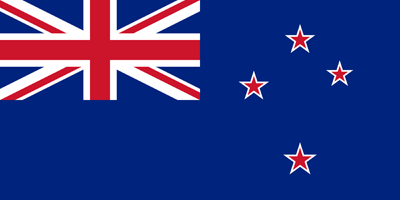New Zealand Harvested Purified Bee Venom Powder
What is Bee Venom?

Bee venom(also known as Apitoxin) is a toxic substance secreted by honeybees through their stingers, primarily used to immobilize intruders for defense purposes. This bee venom contains various bioactive compounds, and its unique components and effects have recently gained significant attention in the pharmaceutical, cosmetic, and medical fields.

Rojel's bee venom collector is placed in front of the beehive and uses a mild electrical stimulus to collect venom onto a glass plate. During this process, the bees do not lose their stingers, ensuring that their health is not compromised.

Bee Venom Composition and Key Components
Bee venom contains a complex mixture of chemical compounds. The primary components include melittin, apamin, phospholipase A2, and hyaluronidase. Each of these components has distinct bioactive properties, contributing to various beneficial effects.
1. Melittin: As the principal component of bee venom, melittin constitutes over 50% of its composition and indicates the quality level of the venom. Melittin prevents blood clotting through its hemolytic activity and exhibits potent anti-inflammatory effects. Additionally, the Harry Perkins Institute of Medical Research in Western Australia has identified its anticancer properties, particularly in inhibiting the growth of breast cancer cells.
In a test measuring the melittin levels, the primary active component of bee venom, Rojel achieved a world-class quality rating of over 64%.

2. Apamin: Known for its neuroregenerative effects, apamin also provides analgesic and anti-inflammatory benefits.
3. Adolapin: This component delivers strong pain-relieving and anti-inflammatory effects.
4. Phospholipase A2: By breaking down cell membranes, phospholipase A2 exhibits antimicrobial properties.
5. Hyaluronidase: This enzyme increases tissue permeability, facilitating the absorption of other components in bee venom.
Benefits of Bee Venom
Bee venom has been extensively studied across various fields, and its primary benefits include:
- Medical and Therapeutic Uses
- Anti-inflammatory and Immune Modulation: Components like melittin and apamin exhibit anti-inflammatory properties, making bee venom effective in treating arthritis, rheumatoid conditions, and multiple sclerosis.
- Pain Management: Apamin provides analgesic effects, helping to alleviate pain.
- Skin Disease Treatment: Phospholipase A2 and hyaluronidase aid in treating skin conditions such as atopic dermatitis and psoriasis.
- Immune Enhancement: Bee venom activates immune cells, boosting overall immunity.
- Improved Blood Circulation: Melittin, a key component, prevents blood clotting through its hemolytic activity, enhancing blood flow.
2. Cosmetics
- Wrinkle Reduction: Bee venom promotes skin regeneration and reduces wrinkles, making it a valuable ingredient in anti-aging products.
- Skin Regeneration: It also improves skin elasticity, contributing to overall skin rejuvenation.
- Natural Antibiotic: Bee venom's antimicrobial and anti-inflammatory properties make it useful for preventing and treating diseases in cattle, pigs, and poultry.
- Mastitis Prevention and Treatment: Particularly effective in dairy cows, bee venom can prevent and treat mastitis, allowing for continued milk production without the drawbacks of traditional antibiotics. In Korea, bee venom acupuncture has been used to treat mastitis in dairy cows.
- Joint, Bone, and Skin Health: Bee venom products are developed and marketed for the treatment of joint, bone, and skin conditions in dogs and cats.
Side Effects
Due to its potent bioactive properties, bee venom can cause side effects. The main side effects include:
- Allergic Reactions: Individuals allergic to bee venom may experience itching, swelling, and difficulty breathing.
- Local Reactions: Direct contact with bee venom on the skin can cause redness, pain, and swelling.
- Hypersensitivity: Some people may have hypersensitive reactions to bee venom, which can lead to shock.
It is essential to consult a professional before using bee venom products.
Production Process
Rojel produces bee venom directly at apiaries near North Auckland, New Zealand. We adhere to the New Zealand government's certified RMP facilities to ensure the production of 100% New Zealand purified bee venom through the following processes.
The crude bee venom harvested from bee venom collector contains numerous impurities, making it unsuitable for direct use in pharmaceuticals, medicine, and cosmetics.


Rojel employs a state-of-the-art production process, utilizing negative pressure filters, centrifuges, and freeze-dryers, to produce 100% New Zealand purified bee venom.
- Collection: We collect crude bee venom using in-house developed venom collector installed in front of beehives.

2. Negative Pressure Filtration: To remove impurities such as dust, honey, bee pollen, and propolis, we employ filtration processes including filter papers and negative pressure filtering.


- Centrifugation: After filtering the bee venom through negative pressure filtration, we further purify it by centrifugation to remove impurities such as heavy metals.

4. Micro Filtration: We further purify the bee venom by removing residual impurities under the micro level, ensuring only pure venom components are extracted.

5. Freeze-drying: Finally, we remove moisture and produce purified bee venom in powdered form through the freeze-drying process. Our products are stored immediately after bottling at temperatures below -20 degrees Celsius.

Rojel offers top-quality bee venom products to a diverse range of customers including pharmaceutical companies, cosmetic firms, veterinarians, traditional medicine practitioners for acupuncture, livestock farmers, and developers of pet care products.
The minimum order quantity for bee venom is 1 gram.
For any inquiries regarding purchases, please contact us at info@rojel.co.nz.
Please enjoy this Youtube content - '100% New Zealand-Harvested Purified Bee Venom'


